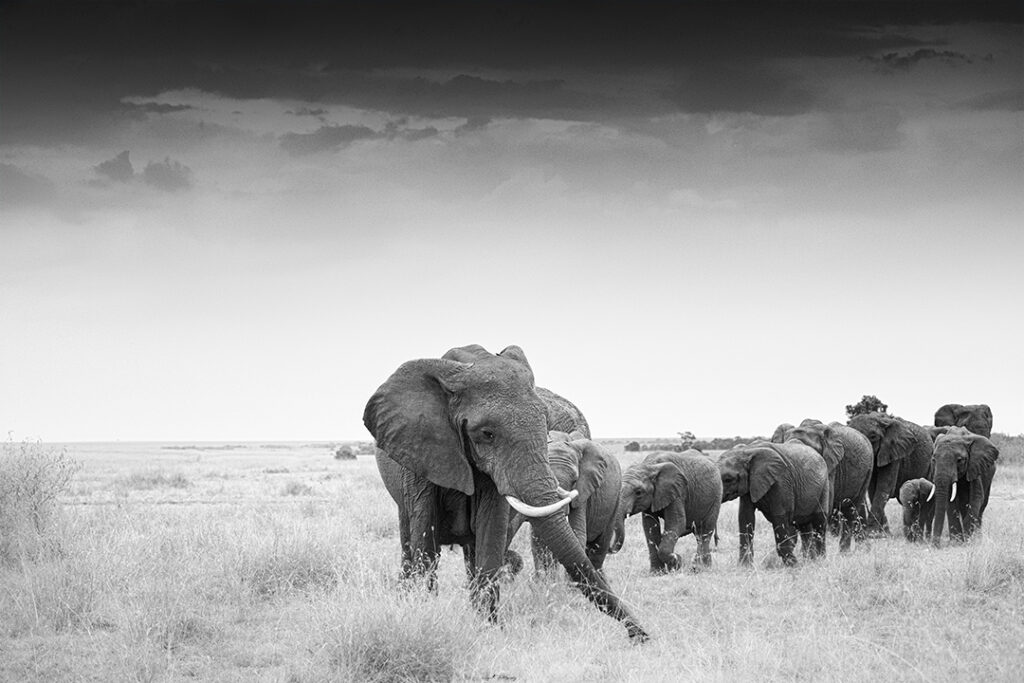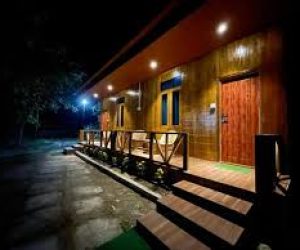- Home
- Workshop
- Kenya Workshop
- Tadoba Workshop
- Amboli Creative Workshop
- Munnar Workshop
- Agumbe Workshop
- Ranthambore Workshop
- Panna workshop
- Kaziranga Workshop
- Pench Workshop
- Mangalajodi Workshop
- Bharatpur Workshop
- LRK Workshop
- Kanha Workshop
- Tal Chhapar Workshop
- Bhigwan Workshop
- Goa Photography Workshop
- Wayanad Workshop
- About
- Fine Art Prints
- GRM Master Class
- Portfolio
- Home
- Workshop
- Kenya Workshop
- Tadoba Workshop
- Amboli Creative Workshop
- Munnar Workshop
- Agumbe Workshop
- Ranthambore Workshop
- Panna workshop
- Kaziranga Workshop
- Pench Workshop
- Mangalajodi Workshop
- Bharatpur Workshop
- LRK Workshop
- Kanha Workshop
- Tal Chhapar Workshop
- Bhigwan Workshop
- Goa Photography Workshop
- Wayanad Workshop
- About
- Fine Art Prints
- GRM Master Class
- Portfolio
Kaziranga Photography
Join us on an extraordinary learning tour to Kaziranga, a journey filled with unparalleled experiences.
Previous
Next
About the Expedition
Key Biodiversity Highlights of Kaziranga National Park Expedition.
Kaziranga National Park, located in Assam, India, is a UNESCO World Heritage Site and one of the most biodiverse regions in the world. Renowned for its vast grasslands, wetlands, and forests, it is a conservation stronghold for some of India’s most iconic and endangered species.
– **Indian One-Horned Rhinoceros:** Kaziranga harbors the largest population of these majestic animals, accounting for more than two-thirds of the global population.
– **Bengal Tigers:** With a high density of tigers, Kaziranga is also a Tiger Reserve, though they are elusive due to the tall grasslands.
– **Asian Elephants:** Found in large herds, they are often seen in open grasslands and near water bodies.
– **Wild Water Buffalo:** Kaziranga is home to the largest population of this endangered species, known for its massive horns.
– **Barasingha (Swamp Deer):** These deer thrive in the park’s swampy grasslands.
– **Other Mammals:**
– Indian Gaur (bison)
– Sambar deer, hog deer, and barking deer
– Sloth bears and leopards
– Small carnivores like civets, jungle cats, and jackals
– **Kaziranga is a birdwatcher’s paradise, designated as an **Important Bird Area (IBA)** with over **500 species** of birds:
– **Wetland Birds:**
– Spot-billed pelicans, lesser adjutants, black-necked storks
– Migratory species like bar-headed geese, ferruginous ducks, and northern pintails
– **Raptors:**
– Pallas’s fish eagle, white-bellied sea eagle, and ospreys
– **Grassland Birds:**
– Bengal florican (critically endangered), swamp francolin, and various prinias
– **Forest Birds:**
– Hornbills, woodpeckers, and barbets
– **Other Notable Birds:**
– Great Indian hornbill, greater adjutant, and white-rumped vulture
– **Reptiles:**
– Gharials and mugger crocodiles in rivers and wetlands
– Indian rock pythons, king cobras, and monitor lizards
– **Turtles:** Kaziranga hosts several species, including the Assam roofed turtle.
– **Amphibians:** Frogs and toads, particularly during the monsoon.
– **Kaziranga’s diverse vegetation supports its rich wildlife:
– **Grasslands:** Tall elephant grass and short grasses dominate the landscape, providing cover and food for herbivores.
– **Wetlands:** Rivers, lakes, and marshes support aquatic species and waterfowl.
– **Woodlands:** Deciduous and semi-evergreen forests add to the habitat diversity.
– **Key Plants:** Indian gooseberry, silk cotton, and elephant apple trees.
– **Brahmaputra River Floodplains:** A dynamic ecosystem shaped by the river, providing fertile grounds for diverse flora and fauna.
– **Beels and Marshes:** Permanent and seasonal water bodies that are crucial for wetland species.
– **Grasslands and High Grounds:** Grasslands offer grazing while raised areas (chapories) provide refuge during floods.
– **Bengal Florican:** One of the world’s rarest birds, found in grasslands.
– **Hoolock Gibbon:** India’s only ape, found in forested areas.
– **Fishing Cat:** Elusive and adapted to wetland environments.
– **Pygmy Hog:** The world’s smallest and rarest wild pig, reintroduced into Kaziranga.
– **Tiger and Rhinoceros Interactions:** Rare but dramatic encounters between these apex species.
– **Bird Migrations:** A spectacle as thousands of migratory birds arrive in winter.
– **Elephant Herds:** Large families foraging and bathing in water bodies.
– **Annual Floods:** Vital for rejuvenating the ecosystem, though challenging for wildlife.
– Designated as a UNESCO World Heritage Site in 1985.
– Recognized as a **Tiger Reserve (2006)** and an Important Bird Area (IBA).
– A stronghold for endangered species like the one-horned rhinoceros and wild water buffalo.
– Anti-poaching initiatives and translocation programs for species like the pygmy hog and swamp deer.
– **Safari Zones:** Kohora, Bagori, Agaratoli, and Burapahar offer unique landscapes and wildlife viewing opportunities.
– **Photographic Highlights:**
– Iconic images of rhinos against tall grasslands.
– Tigers in dense grass or crossing wetland areas.
– Flocks of migratory birds in flight.
– **Best Time to Visit:** November to April (winter and spring seasons) for clear views and wildlife activity.
Kaziranga National Park is a biodiversity treasure trove, blending rich wildlife, unique landscapes, and a legacy of conservation success. It is a must-visit destination for wildlife enthusiasts, birdwatchers, and photographer
Inclusion
- Road Transport from Guwahati station to Guwahati Airport / staion.
- All park fees are included
- Post processing workshop.
- On field guidance on framing, Composition & other aspects of photography.
- Presentation on various topics of photography.
- Services of a professional Driver/Guide.
- All Taxes/VAT
- Meals
- Drinking water throughout the Safari
Exclusion
- Flights/Trains(From/to home)
- Tips and Gratitude’s
- Personal expenses
- Extras at the Resort
- Any item not mentioned in the Inclusions
Travel Date
( 2025 )
- Feb / Mar 26-2
- Mar 5-9
- April 23-27
Things to Carry
Camera
Lenses
Memory Cards
Batteries & Charger
Bean bag
Binocular
Winter Jacket
Sun Glasses
Sunscreen
Travelling
Guwahati -By Road
Route
Guwahati to Kaziranga
Start Point
Guwahati Airport/Station
End Point
Guwahati Airport/Station
Duration
4 nights 5 days
Equipment recommendations
For Kaziranga photography Workshops, here are my equipment recommendations for participants to capture stunning images in the wild:
Camera Bodies - Full-Frame DSLR or Mirrorless.
These cameras perform well in low light and provide excellent image quality and dynamic range.
Suggested Models:
- Canon EOS R5, R6, R3 or Full frame DSLRs
- Nikon Z9,Z8,Z7 II, Z6 III, or Full frame DSLRs
- Sony A7R IV, A1, A9
Lenses - Telephoto Zoom Lenses (for distant wildlife/Birds)
Essential for shooting animals or birds at a distance while maintaining detail and sharpness.
Suggested Options:
- Canon RF 100-500mm f/4.5-7.1L IS USM
- Nikon 180-600mm f/5.6-6.3 ED VR
- Sony 200-600mm f/5.6-6.3 G OSS
- Sigma or Tamron 150-600mm f/5-6.3 (for Canon, Nikon, and Sony)
Lenses - Prime Telephoto Lenses (for sharper images and faster aperture)
Ideal for low-light conditions or when you need a fast shutter speed.
Suggested Options:
- Canon, Nikon, Sony 600mm f/4.8L
Lenses - For landscapes and environmental wildlife shots
For capturing the broader scene or large animals in their environment.
Suggested Options:
- Canon RF 15-35mm f/2.8L IS USM
- Nikon Z 14-30mm f/4 S
- Sony 16-35mm f/2.8 GM
- 70-200mm f/2.8
Additional Accessories
1. Beanbags – For stability when using heavy telephoto lenses.
2. Rain Covers – For camera and lens protection in unpredictable weather.
3. Lens Cleaning Kits – To maintain clarity in outdoor environments.
4. Extra Batteries and Memory Cards
Itinerary
– **Arrival and Orientation**
– **Arrival**: Reach Guwahati airport at 8am and transfer to Kaziranga National Park (approx. 4 hours from Guwahati).
– **Check-in**: Arrive at the lodge and settle in.
– Orientation session covering:
– Workshop schedule and objectives.
– Photography tips specific to Kaziranga (lighting, subject behavior, etc.).
– Gear setup assistance.
Afternoon Safari** (Western Range):
– Target species: Asiatic Elephants, birds like the Bengal Florican, and raptors.
– Focus: Action shots, bird-in-flight techniques.
– **Dinner**: Traditional Assamese cuisine.
– **Overnight Stay**: At the lodge near Kaziranga.
– **Early Morning Safari** (Central Range):
– Target species: Indian One-horned Rhinoceros, Wild Water Buffalo, and Swamp Deer.
– Focus: Golden hour lighting, framing large mammals in tall grass landscapes.
– **Breakfast**: Packed breakfast during the safari.
– **Midday Break**: Review the morning’s captures with a critique session.
– **Afternoon Safari** (Western Range):
– Target species: Asiatic Elephants, birds like the Bengal Florican, and raptors.
– Focus: Action shots, bird-in-flight techniques.
– **Evening**: Photography discussion on storytelling through wildlife images.
– **Overnight Stay**: At the lodge.
Jeep Safari and Gibbon Sanctuary Visit**
– **Early Morning Safari** (Eastern Range):
– Target species: Migratory birds, otters, and smaller mammals.
– Focus: Macro photography of flora and details, behavioral shots of wildlife.
– **Breakfast**: Return to the lodge for breakfast.
– **Afternoon Safari** (Western Range):
– Target species: Rhinoceroses, tigers (rare), and Barasingha.
– Focus: Capturing dynamic interactions and environmental portraits.
– **Breakfast**: Packed breakfast during the safari.
– **Evening Return to Kaziranga**: Rest and light post-processing session.
– **Overnight Stay**: At the lodge.
– **Wildlife and Cultural Experience**
– **Early Morning Safari** (Gibbon Sanctuary):
(Approx. 1.5–2 hours drive).
– Photography session focused on primates like the Hoolock Gibbons.
– Additional opportunities: Birds and unique forest textures.
– **Breakfast**: Packed or local lunch near the sanctuary.
– **Midday Cultural Experience**:
– Visit a nearby village for cultural photography.
– Capture traditional Assamese life, crafts, and performances.
-Lunch Break for an hour
– **Afternoon Safari** (Eastern or Western Range):
– Target species: Waterbirds, marshland landscapes, and elephants.
– Focus: Using light and shadow for dramatic effects.
– **Evening**: Farewell dinner and presentation of participants’ best images.
– **Overnight Stay**: At the lodge.
– **Wrap-Up and Departure**
– **Breakfast**: At the lodge.
– **Departure**: Transfer to Guwahati for onward journey.
Learning during Wildlife Photography Workshops
As a wildlife photographer and mentor, I aim to provide a comprehensive, hands-on learning experience during my workshops.
Here’s a detailed breakdown of the key field learning opportunities participants can expect:
Mastering Camera Settings
– Optimal use of manual modes for wildlife photography in varying light conditions.
– Techniques to freeze or blur motion effectively (e.g., capturing birds in flight).
– Balancing ISO, aperture, and shutter speed for sharp and detailed images.
Composition and Framing
– Rule of thirds, leading lines, and creative framing for impactful shots.
– Utilizing foreground, background, and negative space to create depth.
– Approaches to storytelling through composition, focusing on emotions and actions.
Working with Natural Light
– Best practices for shooting during golden and blue hours.
– Managing harsh sunlight, shadows, and contrast in outdoor settings.
Gear Handling and Maintenance
– Tips for safely handling cameras and lenses in rugged terrains.
– Cleaning and protecting equipment from dust, moisture, and unexpected weather.
– Proper use of tripods, monopods, and beanbags for stability.
Photography Essentials
– Techniques for capturing birds in flight or perched in dynamic poses.
– Using high shutter speeds and continuous autofocus for action shots.
– Identifying ideal habitats for rare and exotic bird species.
Post-Processing Insights
– Editing techniques using various apps like Photoshop & Lightroom.
– Understanding RAW image workflows and their importance in wildlife photography.
– Enhancing colors, contrasts, and clarity while maintaining authenticity.
Understanding Animal Behavior
– Learn to anticipate animal movements by observing body language, habitats, and behavioral patterns.
Important Points
- TOUR ONCE BOOKED ARE NON-REFUNDABLE
- WE ACCEPT THE PACKAGE COST IN INR ONLY
- WE HAVE THE VERY BEST DRIVERS AND GUIDES WHO TAKES US INSIDE THE PARK.
- FOR RESERVATION YOU HAVE TO PAY THE ADVANCE AMOUNT.
- ORIGINAL ID CARDS ARE MUST FOR ENTRY INSIDE THE PARK.
- FOLLOW THE ROUTE INSTRUCTION GIVEN BY THE FOREST OFFICIALS.
- NOISE PRODUCING EQUIPMENT ARE NOT ALLOWED INSIDE THE PARK.

Workshop Cost
- 27,999/-
Per Participants
Note:
- Cost allocated based on 3 participants in a Zypsy
- Costing is based on the availability of Resorts & tariffs.
- Costing may vary in case there is any mid term price change either by Resort/Park.

- 50% as booking amount
- 50% before 30 days of the Expedition.
Why Choose My Workshops
Personalized Mentorship
Tailored guidance based on each participant's skill level and gear.
Exclusive Experiences
Access to unique wildlife destinations and rare opportunities for sightings.
Lifelong Learning
Practical skills that extend beyond the workshop into independent ventures
Join me for an unforgettable learning journey in the wild, where every frame tells a story
Now accepting bookings
request a quote
Step into the untouched beauty of Masai Mara, where every sunrise paints a canvas of breathtaking scenes.
As the golden sun graces the vast savannah, witness the iconic acacia trees silhouetted against the dawn. The sweeping grasslands become a stage for the majestic wildlife, from the graceful giraffes to the powerful lions. The Mara River flows serenely, providing a lifeline to the thriving ecosystem, while dotted plains offer a mesmerizing panorama of nature’s grandeur.
Private Lessons
In-Studio and Virtual Private Lessons are the best way to improve your dancing skills in the shortest period of time. Work at your own pace and receive personalized attention from our dedicated instructors.
Instructors
Every year, 810 Dance Floor Studio brings the world’s most relevant talents and choreographers to mentor our students.
Students Shout Out
“ I’m a total beginner dancer and I felt immediately like part of the dance family.”


Studio A
Studio Size: 42ft x 21ft
Amenities: Air Conditioning, Wi-Fi, Sound System, Dressing Room, Kitchen, Toilets
Embark on a visual journey with me, Gyana Mohanty, where every image is a doorway to the extraordinary. Let the magic of the wild unfold before your eyes!





